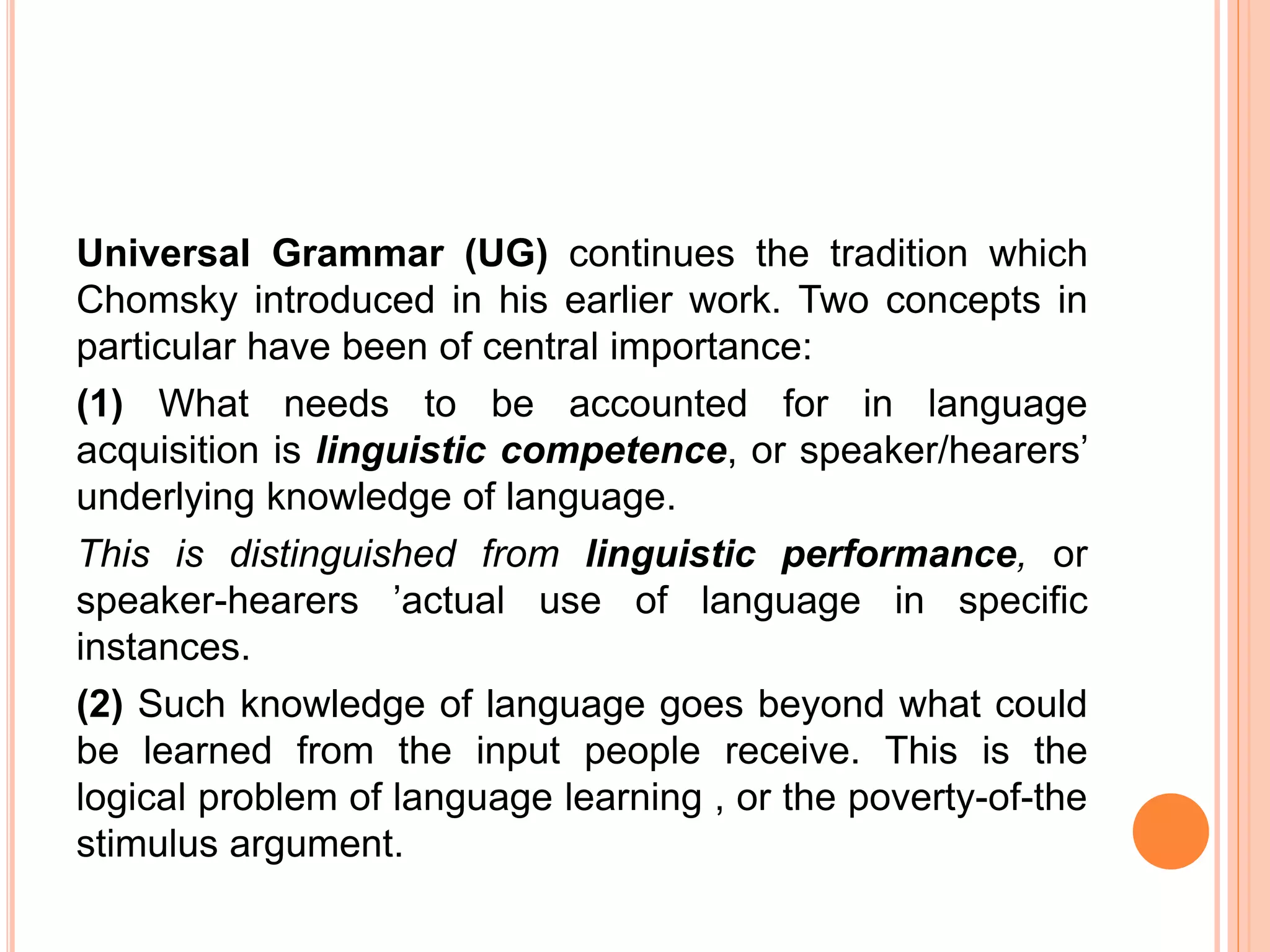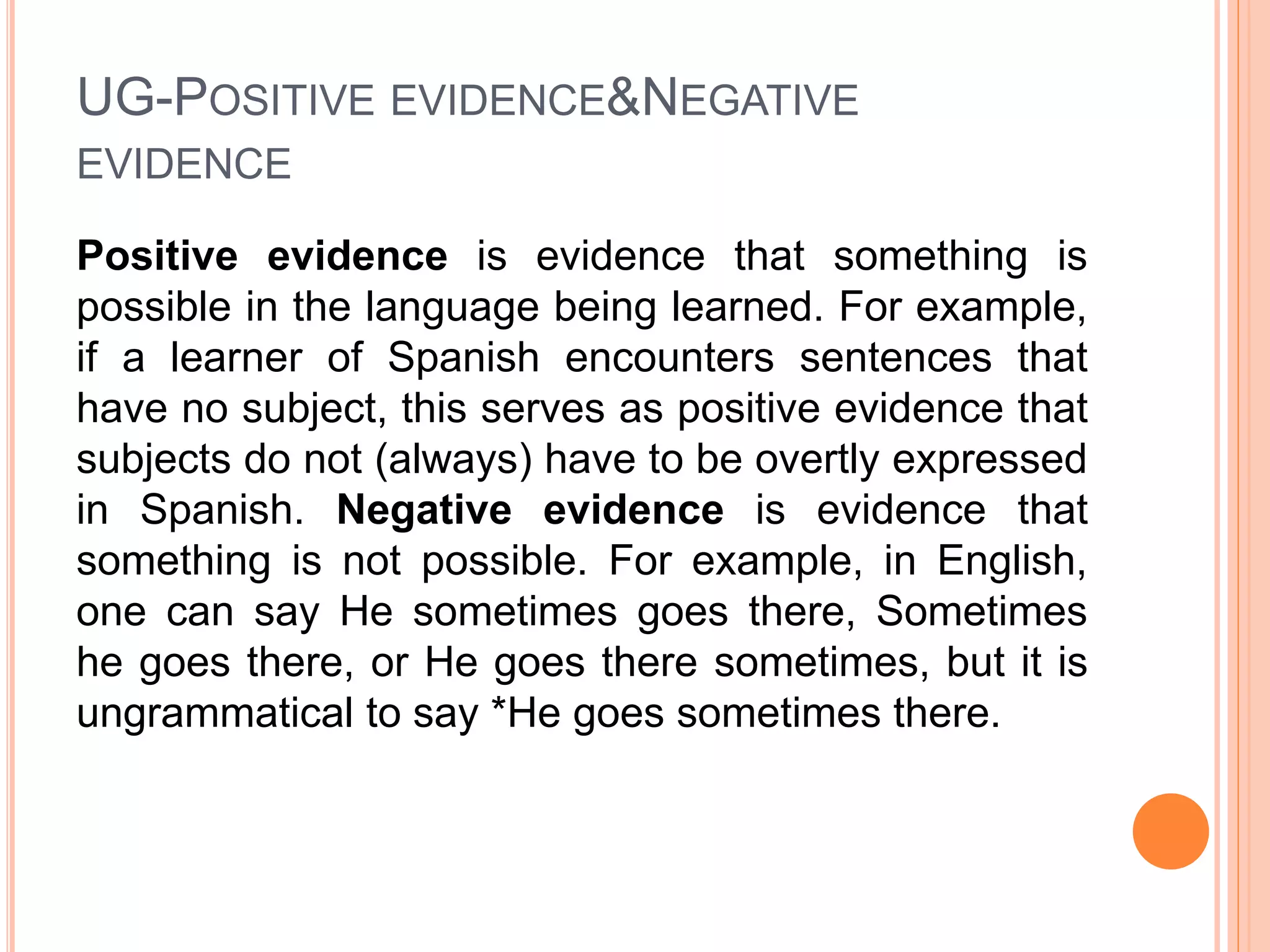The document discusses Noam Chomsky's theory of Universal Grammar (UG), which proposes that the ability to learn grammar is innate. UG suggests that all human languages share certain fundamental structural rules and properties. Children are born with an innate language faculty that allows them to unconsciously analyze the linguistic input they receive according to these principles and parameters of UG to acquire their first language.






![UG-Principles and Parameters
Children who are learning English L1 receive input that lets them know
that English generally has a head-initial parameter setting. This is
because they hear sentences with the following word order:
a. John [kicked the ball] VP
I have put brackets around the VP in this example, and underlined the
head of that phrase, which is the verb kicked . The word order of this
VP provides evidence that the English parameter setting is headinitial,
because the verb kicked comes in front of the ball .
b. John rode [in the car] PP
Brackets are around the PP in this example, and its head is the
preposition in. This provides additional evidence that the parameter
setting for English is head-initial, because the preposition comes in
front of the car in the phrase.](https://image.slidesharecdn.com/formal-approaches3-160109200829/75/Formal-approaches-3-7-2048.jpg)
![UG-Principles and Parameters
In contrast, children who are learning Turkish L1
receive input that lets them know that Turkish
has a head-final parameter setting. They hear
sentences with the following word order:
a. Ali [topa vurdu] VP This provides evidence
that the Turkish parameter setting is headfinal,
because the verb «vurdu» comes after ‘topa’ in
the VP.](https://image.slidesharecdn.com/formal-approaches3-160109200829/75/Formal-approaches-3-8-2048.jpg)










